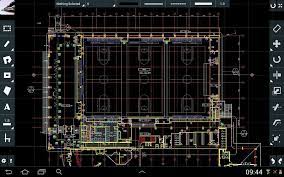Computer-aided design (CAD) is a powerful tool that is used in a wide variety of industries, including the aerospace industry. CAD software allows engineers and designers to create detailed 3D models of aircraft and aerospace systems. These models can be used for a variety of purposes, including:
 CAD has revolutionized the aerospace industry. It has allowed engineers and designers to create more complex and efficient aircraft designs. CAD has also made it possible to simulate the performance of aircraft in a virtual environment. This has helped engineers to identify and address potential problems before they occur.
CAD has revolutionized the aerospace industry. It has allowed engineers and designers to create more complex and efficient aircraft designs. CAD has also made it possible to simulate the performance of aircraft in a virtual environment. This has helped engineers to identify and address potential problems before they occur.
As a result of CAD, the aerospace industry has been able to develop safer, more efficient, and more affordable aircraft. CAD is a critical tool that is essential for the continued advancement of the aerospace industry.
Here are some of the benefits of using CAD in the aerospace industry:
- Preliminary design and concept sketching
- 3D modeling and prototyping
- Performance and safety analysis
- Manufacturing and assembly
- Maintenance and repair
 CAD has revolutionized the aerospace industry. It has allowed engineers and designers to create more complex and efficient aircraft designs. CAD has also made it possible to simulate the performance of aircraft in a virtual environment. This has helped engineers to identify and address potential problems before they occur.
CAD has revolutionized the aerospace industry. It has allowed engineers and designers to create more complex and efficient aircraft designs. CAD has also made it possible to simulate the performance of aircraft in a virtual environment. This has helped engineers to identify and address potential problems before they occur.As a result of CAD, the aerospace industry has been able to develop safer, more efficient, and more affordable aircraft. CAD is a critical tool that is essential for the continued advancement of the aerospace industry.
Here are some of the benefits of using CAD in the aerospace industry:
- Increased efficiency and productivity: CAD can help engineers and designers to create more complex and intricate designs in a shorter amount of time. This can lead to increased efficiency and productivity in the design process.
- Improved accuracy and precision: CAD can help engineers and designers to create more accurate and precise models. This can lead to improved quality and performance of aircraft.
- Reduced costs: CAD can help to reduce the cost of design and manufacturing by eliminating the need for physical prototypes. This can save companies time and money.
- Improved communication: CAD can help to improve communication between engineers and designers. This can lead to better decision-making and a more streamlined design process.